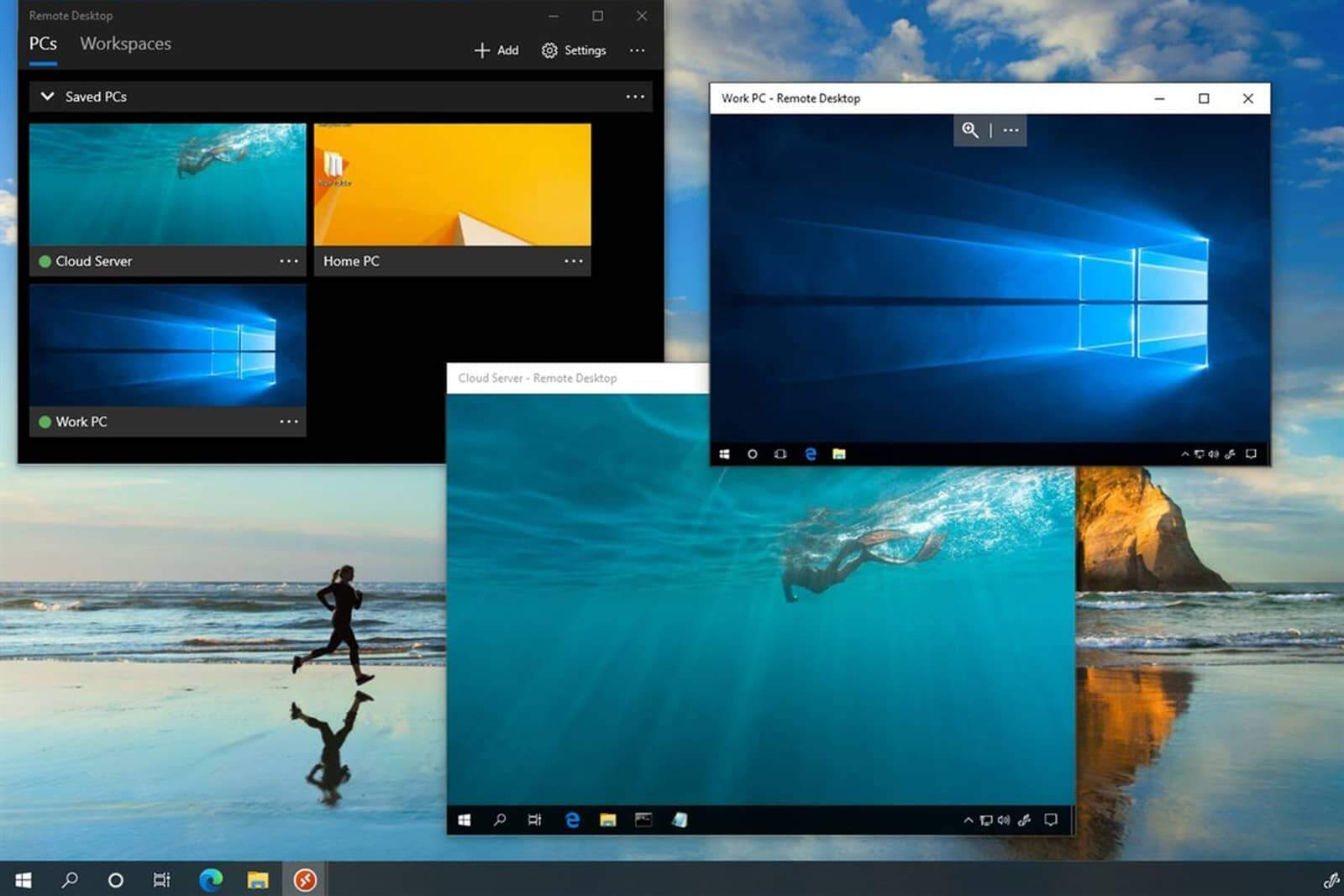As remote work and virtual collaboration continue to dominate the professional landscape, finding the best laptop for remote desktop access has become increasingly essential. Whether you're a seasoned remote worker or just dipping your toes into the world of telecommuting, having a reliable laptop that enables seamless access to your office desktop or company network is crucial to maintaining productivity and efficiency. In this guide, we'll break down the key factors to consider when searching for the ideal laptop for remote desktop use.
As someone who frequently works remotely and relies on remote desktop solutions to stay connected, I understand the importance of a laptop that can handle the unique demands of remote work. With this in mind, I've combed through an extensive laptop spreadsheet of recent releases, comparing specs and reviews (both professional and user-generated) to narrow down the top laptops that cater specifically to remote desktop users. In this process, I've considered not only performance and portability but also other critical factors like battery life, screen quality, and security features – all of which contribute to a smoother remote desktop experience.
When it comes to remote desktop applications, such as TeamViewer, AnyDesk, or Microsoft Remote Desktop, having a laptop with a robust processor and ample RAM is essential for seamless multitasking and lag-free connectivity. Additionally, a high-quality display and comfortable keyboard can significantly enhance your overall remote work experience. As we delve further into this guide, we'll explore these factors in greater detail and highlight the best laptops for remote desktop that strike the perfect balance between performance, portability, and price. So stay tuned to discover the ultimate laptop for your remote work needs, and say goodbye to connectivity woes!
Power up your remote desktop with these processors.
When it comes to choosing a laptop processor for remote desktop applications, there are several options available on the market. Apple's ARM-based M1, M2, M2 Pro, and M2 Max system-on-chip modules offer exceptional performance and battery life, while AMD has captured 20% of the laptop CPU market with its 6th and 7th-generation Ryzen processors. Intel's 12th-generation Core CPUs can provide good value for those who don't require cutting-edge performance.
If you're not sure which CPU is best for remote desktop applications, it's recommended to go with an H-series processor like an Intel i7. These processors offer better performance, but they consume more power and produce more heat, which means they require a better cooling system. However, if you're using a cloud-based RDP solution, such as Citrix Receiver or Microsoft RDS, you don't need to worry about processor performance, as these solutions rely on the cloud for processing tasks.
To find out how well a processor performs in remote desktop applications, you can use benchmarking websites like PassMark and Cinebench, which are popular and easy to find online. When choosing a laptop processor, it's important to pay attention to the processor's power consumption requirements. If you're going for a laptop with a short battery life, make sure it has a high-end CPU that won't be throttled due to thermal limitations.
Below is a table of recommended processors by price bracket and what to expect at each price level:
| Processor | Price | Expected Performance |
|---|---|---|
| Intel i5-11320H | $ | Minimum |
| AMD Ryzen 5 5600U | $$ | Recommended |
| Intel i5-11500H | $$$ | High-end |
Ultimately, the processor you choose for your remote desktop laptop will depend on your budget and performance requirements. However, with these recommendations and tips in mind, you should be able to find the right processor to suit your needs.
Power up your remote desktop with these graphics cards!
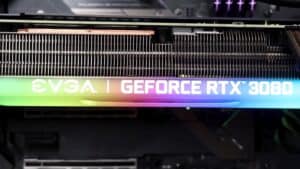
When it comes to choosing a laptop for remote desktop (RDP) applications, you don't necessarily need a dedicated graphics card. Integrated graphics are more than sufficient for this use case. That said, let's dive into how to choose the right graphics card for your RDP laptop.
Firstly, it's essential to note that Nvidia dominates the laptop GPU market, and their RTX 30 series cards make up the majority of the current notebook GPU market. The recently released RTX 40 series cards are only found in high-end laptops and may not be necessary for RDP applications.
It's also worth mentioning that Nvidia has discontinued the Max-Q label for its RTX graphics cards, meaning that an exact GPU wattage is now determined by the laptop manufacturer (OEM). As a result, there may be a wide variance in graphics performance even in laptops with the same GPU chipset.
When it comes to workstation GPUs, they're not necessarily worth the additional cost for RDP applications, as they're designed for heavy 3D modeling and rendering tasks.
To determine if a GPU is fast, you can use benchmarking tools such as 3DMark, Unigine Heaven, and GFXBench. While 3DMark is the most popular benchmarking tool, it's not the most accurate way to compare different graphics processors since it doesn't account for all of the important aspects of laptop graphics performance.
With that said, here are our recommended GPUs for RDP laptops:
| GPU | Expected Price |
|---|---|
| GeForce RTX 3050 | $200-$300 |
| GeForce RTX 3060 | $400-$600 |
| GeForce RTX 2080 SUPER | $1200-$1500 |
The minimum recommended GPU for RDP laptops is the GeForce RTX 3050, with the recommended GPU being the GeForce RTX 3060. If you're looking for a high-end GPU, the GeForce RTX 2080 SUPER is a great option, but it comes at a premium price.
Lastly, if you're looking for a gaming laptop for RDP applications, make sure it has a fast refresh rate display of over 120 Hz.
Unleashing the Power of Remote Desktops: Common Questions Answered!
Q: What laptop is best for remote desktop?
The best laptop for remote desktop depends on your needs and budget. For a budget-friendly option, the ASUS TUF A15 with a GeForce RTX 3050 graphics card and an i5-11320H processor would be a good choice. For a higher-end option, the Lenovo Legion 5 Pro or GIGABYTE AORUS 15 XE4 with a GeForce RTX 3060 graphics card and an AMD Ryzen 5 5600U or i5-11500H processor, respectively, are great options. The Dell XPS 17 9720 with a GeForce RTX 2080 SUPER graphics card and an i9-11900H processor is the most expensive option but also the most powerful one.
How much RAM do I need for remote desktop?
16 GB of RAM is the minimum recommended amount for remote desktop. If you plan on multitasking or running more demanding applications while using remote desktop, 32 GB or even 64 GB of RAM is recommended.
What are the minimum laptop specs for remote desktop?
The minimum laptop specs for remote desktop are a dedicated graphics card such as the GeForce RTX 3050, an i5-11320H or higher processor, and 16 GB of RAM.
Can I use any laptop for remote desktop?
Technically, any laptop can be used for remote desktop. However, to have a smooth and enjoyable experience, it is recommended to use a laptop with the minimum specs mentioned earlier.
What is the best laptop for remote work?
The best laptop for remote work depends on your specific needs and budget. If you need a laptop primarily for remote desktop, the ASUS TUF A15 or Lenovo Legion 5 Pro would be great options. If you need a laptop for other demanding work such as video editing or gaming, the Dell XPS 17 9720 or GIGABYTE AORUS 15 XE4 would be more appropriate.
How to choose a laptop for remote desktop?
When choosing a laptop for remote desktop, consider your budget, the minimum and recommended specs mentioned earlier, and any additional features or requirements you may have such as a larger screen or long battery life.
Do I need a fast processor for remote desktop?
A fast processor is not necessary for remote desktop, but it can improve the overall performance and speed of the experience. An i5-11320H processor or higher is recommended.
How to improve remote desktop performance on a laptop?
To improve remote desktop performance on a laptop, ensure that your laptop meets the minimum recommended specs, use a stable internet connection, and close any unnecessary applications or background processes that may be using up your laptop's resources.
Can I use a Chromebook for remote desktop?
Yes, you can use a Chromebook for remote desktop, but it may not provide the best experience due to its lower specs compared to other laptops.
What are the system requirements for remote desktop on a laptop?
The system requirements for remote desktop on a laptop include a dedicated graphics card such as the GeForce RTX 3050 or higher, an i5-11320H or higher processor, and 16 GB of RAM.
RAMming up your remote desktop experience
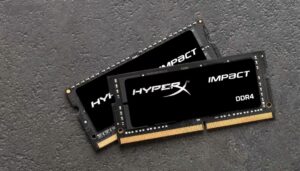
When it comes to remote desktop applications, RAM is not usually the bottleneck. However, having enough memory is still important to ensure smooth and efficient multitasking. In recent years, most mid-range laptops come with 16 GB of RAM, while high-end laptops have 32 GB or more.
If you're using multiple virtual machines simultaneously, 64 GB of RAM would be ideal, but 32 GB should be enough for most users. Keep in mind that upgrading RAM in laptops is more challenging than in desktops, so if you're considering upgrading a laptop with 16 GB of RAM to 32 GB, it's not worth the hassle.
In terms of RAM speed, the truth is that it doesn't matter much in this case because remote desktop applications do not take full advantage of high-speed RAM. DDR4-3200 or even DDR5 can be used if you can afford it, but DDR5 is still quite expensive and needs time to mature as a technology.
If you're working with sensitive data, such as medical or financial information, then ECC RAM may be necessary. ECC RAM detects and corrects errors, ensuring data integrity. However, for most users, it's not necessary.
Here's a table to help you decide on the right laptop RAM for your budget:
| Budget | RAM Recommendation |
|---|---|
| Minimum | 16 GB |
| Recommended | 32 GB |
| High-end | 64 GB |
In summary, when it comes to remote desktop applications, having enough RAM is crucial to ensure smooth multitasking. RAM speed is not as important as having enough memory, and ECC RAM is only necessary for those working with sensitive data. Use the table above to determine the appropriate amount of RAM for your budget.
5 Best Laptops for remote desktop
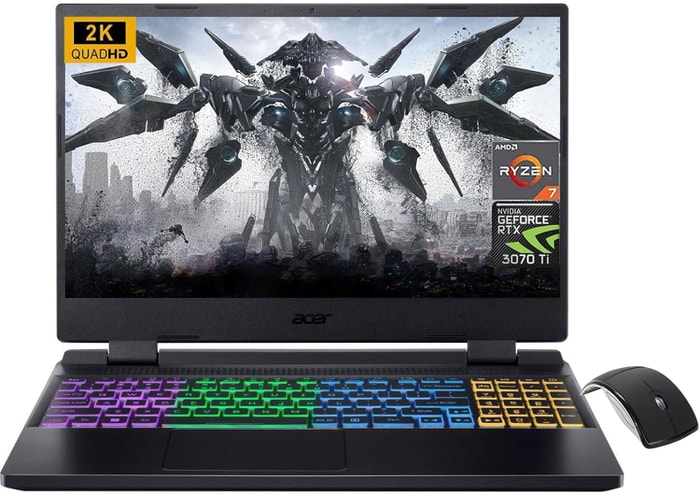 $680
$6801.acer Nitro 5
remote desktop laptop- Terrific processor (Ryzen 7 6800H)
- Solid graphics card (RTX 3070 Ti)
- One of most affordable laptops with an AMD Ryzen 7 processor
- Hefty 1TB SSD
- No IPS Panel (worse contrast)
Alternatives
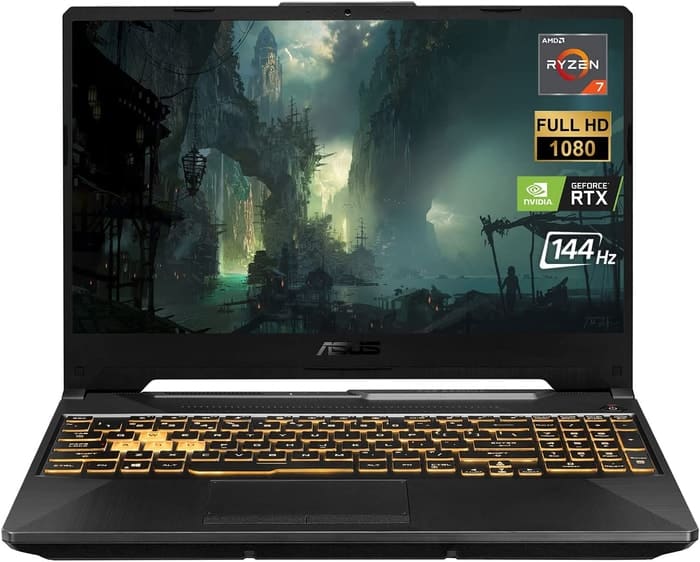
ASUS TUF A15
- Great gaming performance at 1080p
- Good overall system performance
- Mediocre webcam
- Weak speakers

2.ASUS TUF Dash F15
ASUS TUF Dash F15: A competitively priced, all-purpose/gaming laptop with improved performance and a variety of screen options.- Lightweight and well-built design
- Good inputs and IO
- Offers good FHD 300Hz and QHD screen options
- Significantly more powerful than the previous generation
- Some quirks affecting everyday ergonomics
- Ports squeezed together on the left edge
- Be cautious of the FHD 144Hz screen option
Summary
The ASUS TUF Dash F15 is a well-built and lightweight laptop that offers improved performance compared to its previous generation. With its competitive price, good inputs, and various screen options, it's a solid choice for those on a lower budget. However, be cautious of the FHD 144Hz screen option.
Reviews
Alternatives
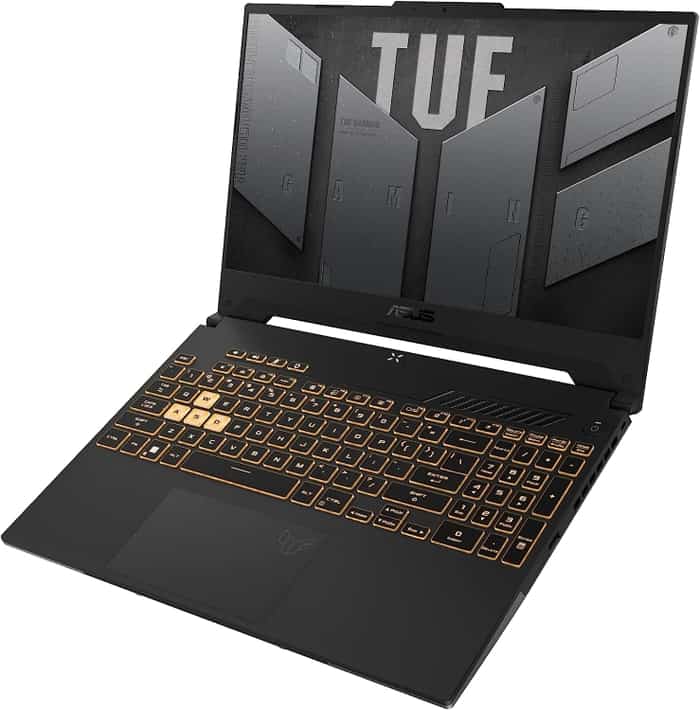
ASUS TUF F15 FX507VU-ES53
- Superb 1080p gaming performance
- Strong productivity capabilities
- Poor webcam, touchpad, and speakers
- Some games appear washed out on the display
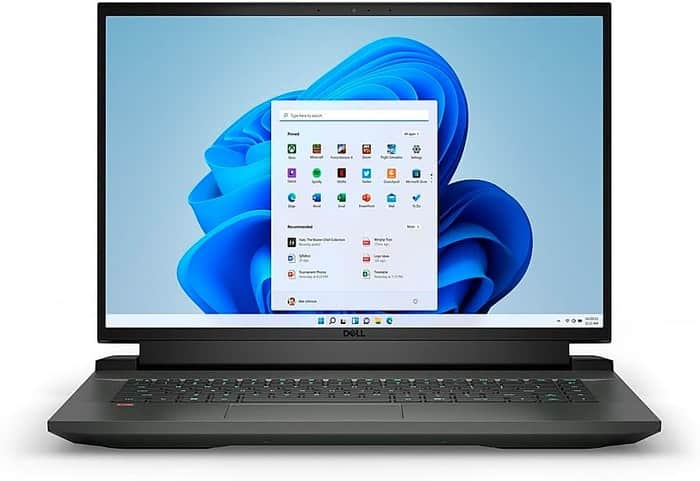
3.Dell G16
The Dell G16 offers impressive gaming and productivity performance at an affordable price, but falls short in display quality and battery life.- Affordable price
- Strong gaming and productivity performance
- Good cooling system
- Fast refresh rate options with G-Sync
- Heavier and thicker than competitors
- No Thunderbolt 4 on base model
- Lackluster display quality
- Short battery life
Summary
The Dell G16 excels in delivering powerful performance for gaming and productivity tasks, making it a great option for budget-conscious users. However, its display quality and battery life are underwhelming. It also lacks some features like Thunderbolt 4 and an SD card reader.
Reviews
Alternatives
 $1,430
$1,430MSI Cyborg 15
- Able to play at the highest 1080p settings
- Peppy processor for the money
- Display is dim and disappointing
- Sharp chassis edge can dig into wrists during typing
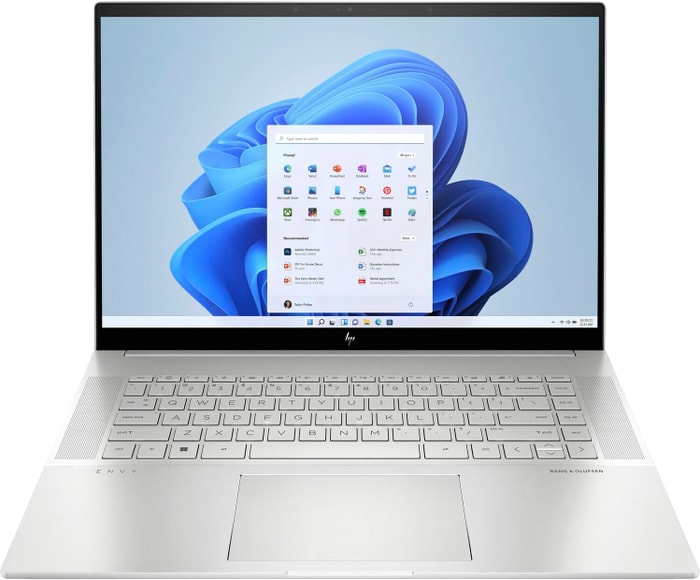 $1,800
$1,8004.HP Envy 16
HP Envy 16: A heavyweight desktop replacement with high-end features.- Plenty of CPU and GPU power
- New 120Hz screen refresh rate
- High-res webcam
- Sleek design
- Merely adequate base screen
- Optional OLED has fewer pixels than before
- Bulky and heavy
Summary
The HP Envy 16 is a powerful desktop replacement laptop with high-end features such as a 120Hz refresh rate display and a high-resolution webcam. It offers plenty of CPU and GPU power for creative applications and light gaming, although it is bulky and heavy.
Reviews
Alternatives

ASUS ROG Strix G15
- High-performance CPU and GPU
- Good workmanship
- Skimpy connectivity
- Coil whine in certain situations

5.Lenovo Legion Pro 7i 16
Lenovo Legion Pro 7i 16: Impressive Performance at a Fair Price.- Strong overall performance
- Big, bright, and fast display
- Per-key RGB lighting
- Some flex to keyboard deck
- Poor battery life
Summary
The Lenovo Legion Pro 7i 16 delivers impressive gaming performance with its i9-13900HX processor and RTX 4090 graphics card. It offers a sleek design that conceals its gamer-centric features and comes at a justifiable price point, making it a compelling choice for gamers looking for a long-term investment.
Alternatives

HP Omen 17
- QHD display with 165 Hz
- Expandable working memory
- Slightly below-average performance for a RTX 4080
- High noise level
Table of the Best Laptops for remote desktop
| Laptop | Price (approx) |
| acer Nitro 5 | $680 |
| ASUS TUF Dash F15 | $1,160 |
| Dell G16 | $1,510 |
| HP Envy 16 | $1,800 |
| Lenovo Legion Pro 7i 16 | $3,390 |

